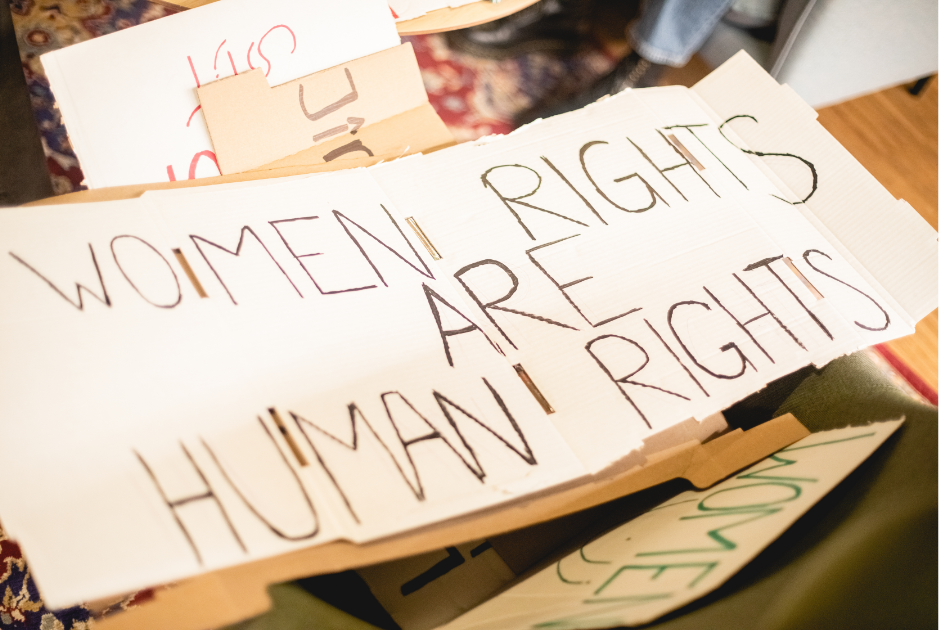Amos Chapple wanted to know what the coldest place in the Northern Hemisphere looked like.
So in the winter of 2012, Chapple made his first trip to Oymyakon.
Oymyakon is a small village in the Sakha Republic, which is part of Russia. On Feb. 6, 1924, the weather station at then-Soviet Oymyakon recorded a blisteringly cold temperature of 96.2 degrees below zero Fahrenheit— the coldest temperature ever officially recorded in the Northern Hemisphere.
A Soviet-era monument declaring Oymyakon the Northern Hemisphere's "Pole of Cold." All photographs by Amos Chapple, used with permission.
Oymyakon and the rest of the Sakha Republic is probably a blank spot on the map for a lot of people.
I hadn't heard of Oymyakon before, and when Chapple mentioned the republic's capital city of Yakutsk, the first thing that sprang to my mind was a nondescript green blob in the game of Risk, an unfamiliar name sandwiched somewhere between Siberia, China, and Alaska.
But when Chapple got there, he found one of the most visually striking places in the world.
"I think it's spectacular," said Chapple. "Like in the winter when all the mist hangs over everything and everything's kind of caked in these little icicles, it makes everything look like it's dusted in icing sugar or something. It's visually so unique. And at the time it wasn't an image that was out there in the public consciousness."
Chapple spent the winter there (and several more after), documenting what life is like for local people.
Oymyakon at dawn.
Oymyakon is a small village of only about 500 people, and they've had to adapt to life in the cold.
Cars have to be kept running overnight, or else the gasoline and other parts may freeze solid.
A man uses a torch to thaw out his car's drive shaft.
This makes Oymyakon's remote gas stations a lifeline. Workers spend two weeks on, then two weeks off.
Heat is provided by a coal-fired power plant at the edge of town. A digger delivers a fresh load of coal every morning.
Nikolai Petrovich, a local farmer, keeps his cows in an insulated shed every night.
Most houses in Oymyakon don't have indoor toilets. Instead, the people use outhouses.
Why outhouses? Because it's nearly impossible to lay plumbing through the permanently frozen soil.
Driving out of Oymyakon leads to the Kolyma Highway, also known as "The Road of Bones."
The road was built by gulag laborers back during the USSR's Stalinist era. Many died while building it.
Even with the extreme cold, Chapple wanted to come back and photograph more.
During his first visit to Oymyakon, Chapple passed through Yakutsk, the republic's capital city, and it enchanted him. So the next year, Chapple went back to the region.
"I'd come through the city of Yakutsk, the capital, and had been really amazed. Right at the moment I came out of the airport, and it was all misty and foggy and there were these beautiful women in enormous fur coats and everything was rimed in frost," said Chapple.
"I thought, 'I've got to get back.'"
Yakutsk is home to about 270,000 people, and while it's not the "Pole of Cold," it can get pretty chilly there too.
The day Chapple took this picture, it was about 60 degrees below zero.
Even the statues are frozen over.
A statue of Ivan Kraft, one of the region's first governors.
People have to bundle up, like this local girl coming home from the university.
As Chapple moved around the city, he saw other amazing sights, like this woman entering Preobrazhensky Cathedral in a cloud of mist.
These young people enjoying themselves at a night club.
These frost-covered houses near the city center.
This grizzled, dour-looking guard dog.
Or these summer shoes in the suburbs, hanging from a shed.
Since then, Chapple's been back to the Sakha Republic for many more winters, and a few summers as well.
In fact, he's just finished up an incredible special report about mammoth pirates in Russia's Arctic north.
One of the amazing things about Chapple's photography is how it really captured the icy region.
"So often with photography, you work really, really hard to get a moment that's not like any of the other moments," said Chapple. A photographer might stake out a beach for weeks to capture that one-in-a-million sunset, for example. But in Sakha, the pictures really represented what it was like from the first moment he stepped off the plane.
"From the moment you stepped out of the airport and saw all the trees — which were bare of any leaves, all completely encased in ice — this really is the Siberia of people's imagination."





 What was I doing again?
What was I doing again? A space waitress at work.
A space waitress at work.  Waking Up Funeral GIF
Waking Up Funeral GIF Rihanna Nails GIF
Rihanna Nails GIF Yoga pants.Image via Canva.
Yoga pants.Image via Canva. Our natural lashes are nice just the way they are!
Our natural lashes are nice just the way they are! One step forward, many steps back. Image via Canva.
One step forward, many steps back. Image via Canva.  Homelessness is especially rampant on the West Coast.Image via Canva
Homelessness is especially rampant on the West Coast.Image via Canva